Top 10 Dwarf Fruit Trees for Small Spaces
Updated: Jan. 27, 2023
You don’t need to own an orchard or live in the tropics to grow fresh fruit. You can grow dwarf fruit trees even if you have a small yard.
Our editors and experts handpick every product we feature. We may earn a commission from your purchases.
Sure, you can walk into the grocery store and toss a bag of nectarines or apples into your shopping cart, but wouldn’t it be better if you could just walk out your back door? We found a book, Fruit Trees in Small Spaces by Colby Eierman that’s all about fruit trees and how to grow them, care for them and—the most important part—how to reap the rewards. Best of all, these dwarf fruit trees won’t take over your yard. Options are endless, and some will even flourish in containers.
We’ve suggested one variety for each type of dwarf fruit tree. But, as with any new plant you’re going to try, make sure the tree you choose will work in your zone and growing conditions. And keep in mind that some dwarf fruit trees, like apples, require two plants for cross pollination and fruit formation. Stop by your favorite garden center, plant nursery or local extension office to find out which varieties will do best in your backyard.
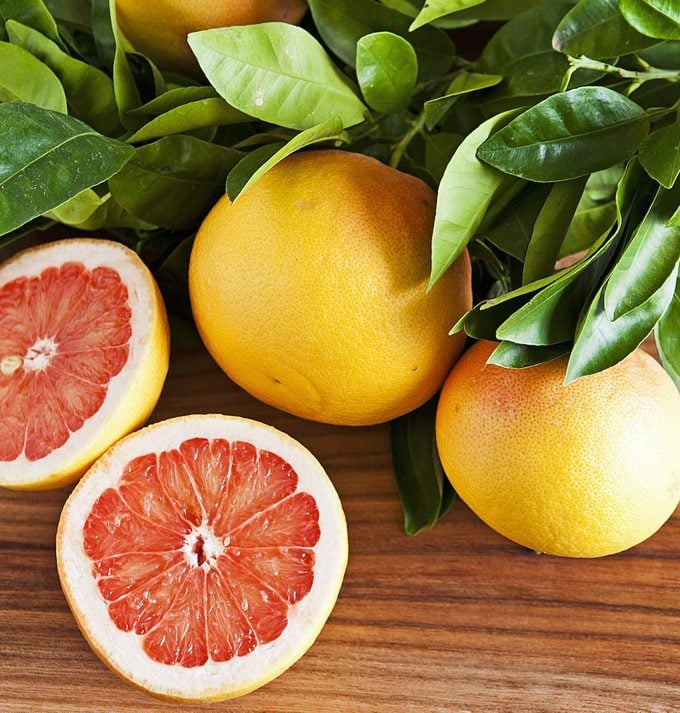
Grapefruit
In order for grapefruit to get the brilliant pink color we all look for, it needs intense summer heat. But the color of the fruit doesn’t determine its ripeness. If a grapefruit feels heavy on the tree, pluck it off , slice it open and give it a try.
Try this: The Rio Red bears sweet, seedless grapefruits that are ideal for making juice. This dwarf fruit tree is a perfect choice for a small space.
Check out the top 10 berry trees and shrubs birds love.
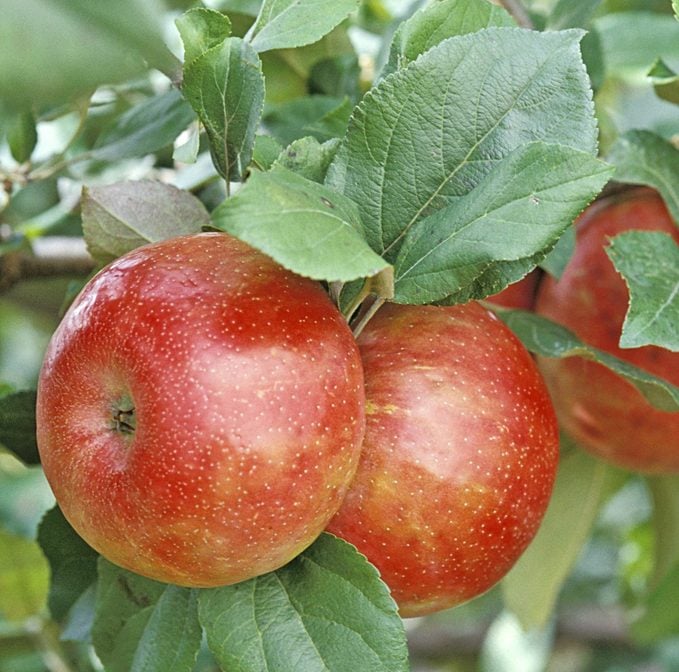
Apple
The variety of apple trees out there can be a little overwhelming, so it’s especially important to find one that will work with your growing conditions. Be sure to look for disease-resistant trees, because apple trees are very susceptible to a number of common ailments.
Try this: You can’t go wrong planting a Honeycrisp apple tree. Its sweet, crunchy, medium-size apples are perfect for eating fresh when you pick them.
This is why you should plant a weeping crabapple tree.
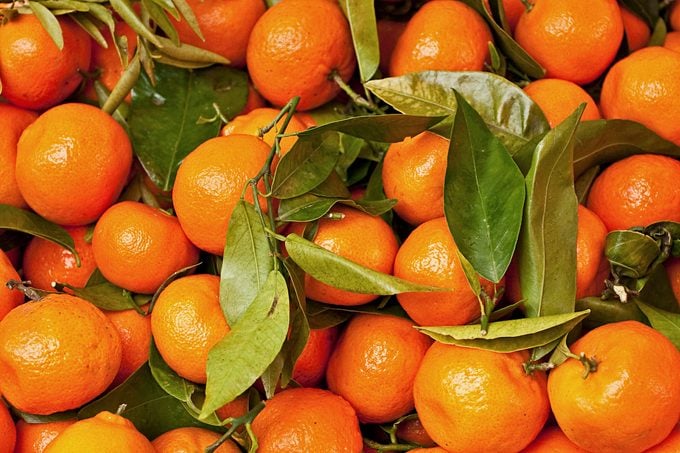
Mandarin
Only gardeners in the far South can enjoy the fruit of a mandarin tree straight from the backyard. But if you’re in the right zone, they’re fairly easy to grow. A mandarin will require some pruning to shape it into a small tree or shrub, but other than that, just enjoy!
Try this: Satsuma mandarin trees are a popular choice. They will produce large, sweet, easy-to-peel fruit that your kids and grandkids will love.
Learn how to grow an indoor lemon tree.
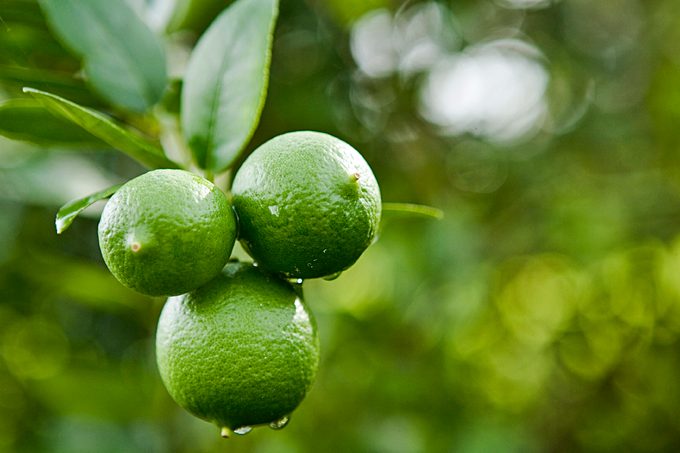
Lime
Lime trees are very sensitive to cold, so make sure you can accommodate their needs before trying to grow one. Not only do these small trees produce juicy fruit for cocktails and cooking, they have beautiful dark, glossy leaves.
Try this: Mexican limes, also known as key limes (yes, like the pie), are more suitable for planting in warm climates (psst—here’s how to find your plant zone). They’re upright dwarf fruit trees that will grow up to 15 feet tall.
Check out the top 10 dwarf conifers for small spaces.
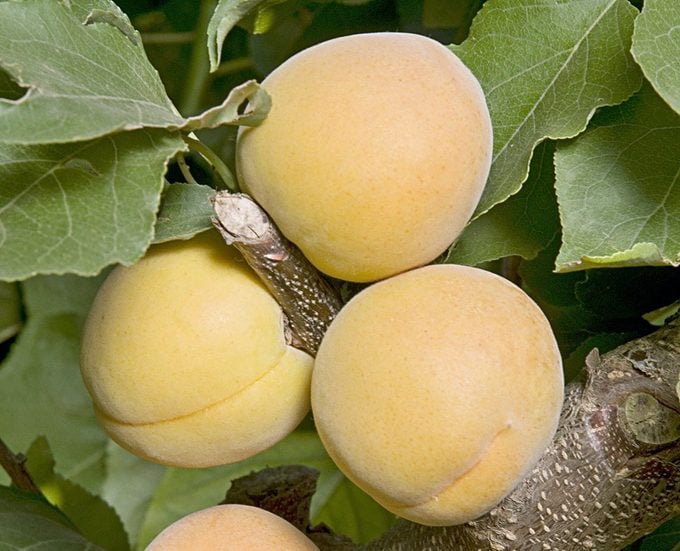
Apricot
Northern gardeners, this one’s for you! Apricot trees do tolerate cold temperatures, but be careful. Because of early flowering, late frost can sometimes take its toll on trees. The fruit is delicate, so growing your own ensures you’ll get high-quality, unblemished apricots.
Try this: If you’re looking for a sweet apricot, give Goldcot a try. It ripens midseason and is good for colder climates.
We found 10 dwarf flowering shrubs for containers.
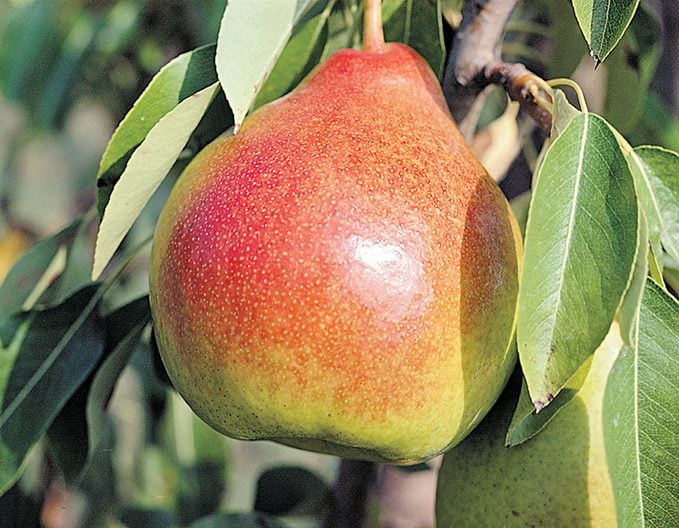
Pear
When it comes to pear trees, you’ve got a choice—European or Asian. In choosing between the two, it all depends on your taste. The European pear tree is a real showstopper in the garden with soft fruit, while the Asian variety produces pears that taste crisp and juicy like an apple.
Try this: Moonglow, a European variety, is a strong grower with flavorful fruit, but it will need to be planted with a pollinator—so get two trees.
Get expert tips for growing a clementine tree indoors.
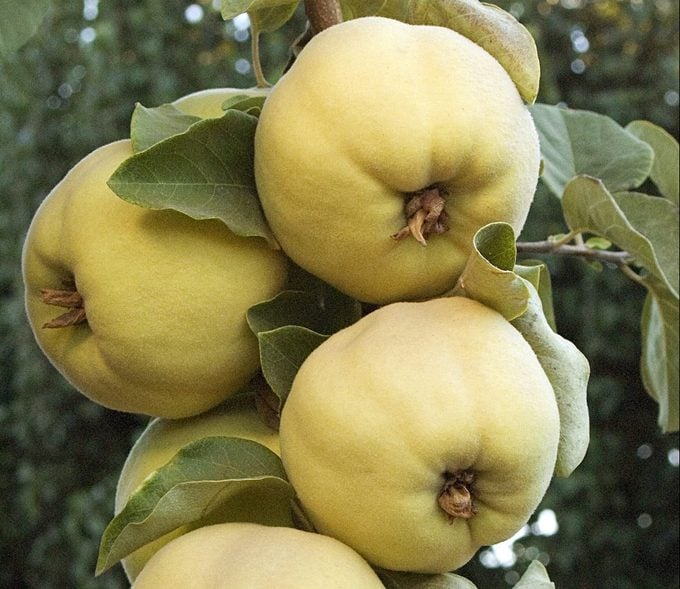
Quince
You might be familiar with the flowering quince, but did you know you can eat the fruit? A close relative to the flowering quince, the edible quince is excellent for jams, jellies and preserves. In general, quinces aren’t enjoyable for eating fresh right off the tree.
Try this: It’s not a shock that the Pineapple quince variety has a hint of pineapple when cooked. Be sure to let quinces ripen fully on the tree before picking.
Check out the top 10 tropical fruit trees to grow.
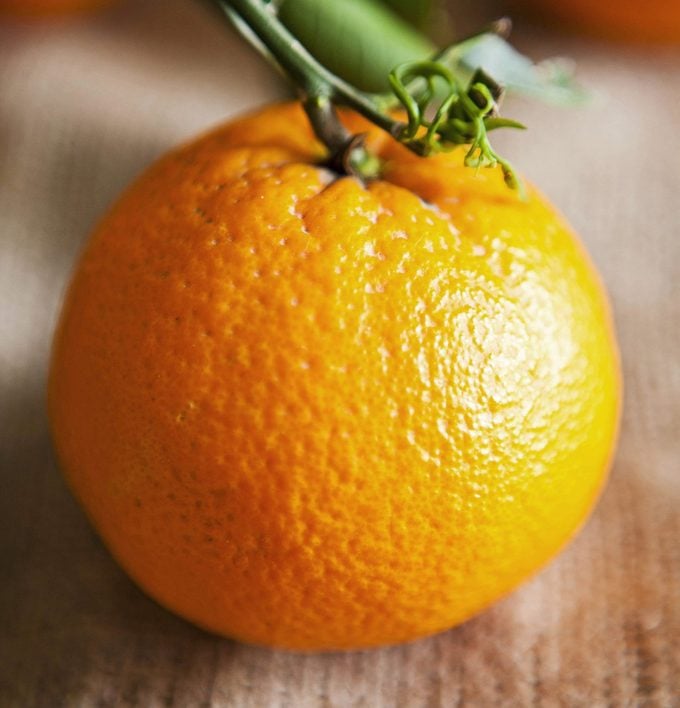
Orange
Did you know oranges can stay on the tree for months before you need to pick them? In some cases this even makes the fruit sweeter. If you live in the North, look for dwarf fruit tree varieties that you can plant in a pot and take indoors for winter.
Try this: The Trovita orange tree produces sweet fruit with outstanding flavor. A versatile grower, it’s good for cooler climates but will also tolerate intense desert heat.
Follow these 5 essential steps for tree planting success.
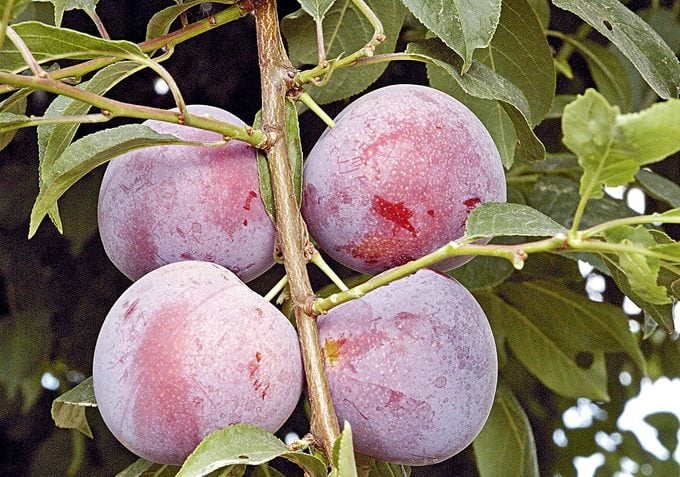
Plum
Plum trees are versatile, slower growers, so pruning is easy. They can handle drought, but watch out for pest problems. When buying a small plum tree, make sure it’s the fruiting kind, not the flowering kind.
Try this: The Methley variety has purplish-red skin and a sweet taste. It ripens earlier than other plum varieties, so you can enjoy the fruit early in the season. Plus, it’s pest-resistant.
Did you know that you can eat flowers? Check out the top 10 edible flowering plants for home cooks to grow.
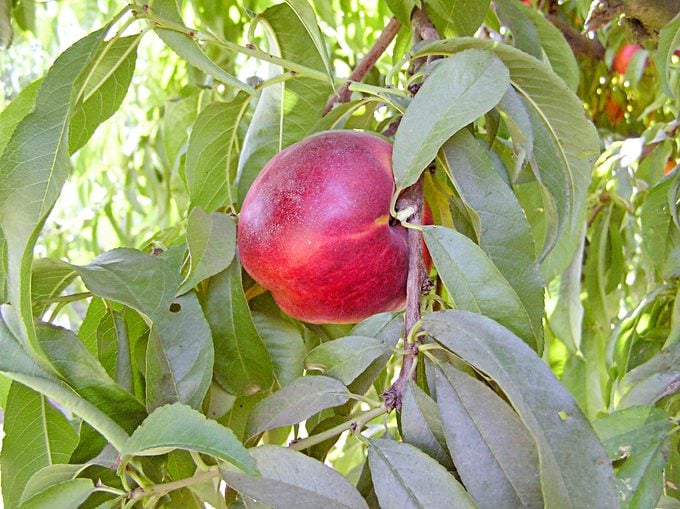
Nectarine
Nectarines are essentially peaches without the fuzz, and both types of trees require a lot of pruning, fertilizing, thinning and watering. But the flavor and juiciness of the homegrown fruit will make it all worthwhile.
Try this: The supersweet Fantasia nectarine reaches peak ripeness in midseason. This variety doesn’t require as much winter chilling as other dwarf nectarine fruit trees, but it will still do fine in colder regions.
Next, check out 8 types of Christmas trees you can grow.
